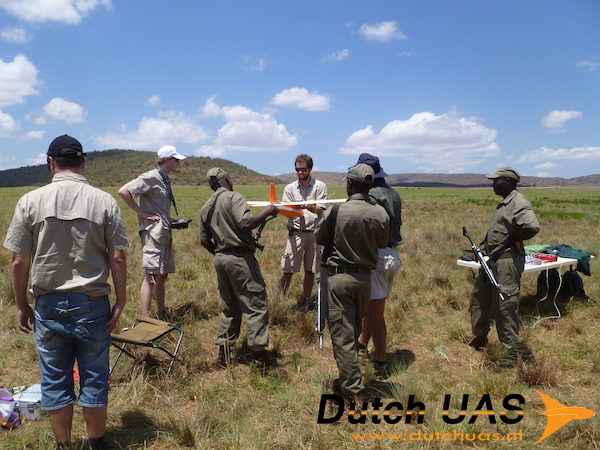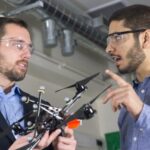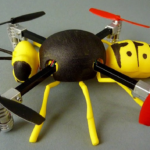

It seems like the 3D printing space is far from the home of the world’s remaining rhinoceros population, but thanks to the sense of urgency motivating the Wildlife Conservation Unmanned Aerial Vehicle (UAV) Challenge (wcUAVc), these seemingly disparate worlds just grew much closer together. For those of us who are just as excited about animal diversity as we are about the latest technology trends, how do 3D printed anti-poaching drones sound? Yes, the military is one battle context for drone applications, but apparently, wildlife conservation has also brought its own battle to the table as well — against animal extinction.
Save the Rhino reports that in the early twentieth century the Rhinoceros population was around 500,000, but that abundant population has been dwindling — and the Western Black Rhino was declared extinct in 2011 by the International Union for the Conservation of Nature. With three out of the five remaining rhinoceros species declared critically endangered, largely due to rampant poaching for highly valuable rhino tusk, it’s clear that innovative solutions need to be found so the other species don’t have the same bleak future as the Western Black Rhino. Enter 3D printing.
wcUAVc is a competition for the development of anti-poaching drones that are open source, involve embedded systems with integrated sensors, are reliable and easy to fix, and can operate with minimal human assistance. This effort is truly global, with participants currently encompassing 139 teams in over 29 countries on 6 continents, with the teams comprised of academics, corporate representatives, scientists, and enthusiasts.
Approximately 400 rangers are currently needed to patrol South Africa’s Kruger National Park, which is approximately the size of New Jersey; why not design a more efficient system than the current search-and-seize system being used in the Park and elsewhere? Why not design aircraft that are tough, reliable, easy to repair, and able to perform their mission with relatively little human assistance? Why not use 3D printing to produce these vehicles? After all, the technology has already proven its widespread applicability in drone manufacturing.
3D printing enthusiasts will recognize how well this technology fits the demands of drones in the anti-poaching context that requires a vehicle that can fly all hours of the day under any weather conditions that is also low cost: the goal for the wcUAVc is to create a drone with total costs under $3,000.

Per the wcUAVc website, the competition has a three-tiered goal:
- Create an awareness concerning poaching of endangered species worldwide.
- Energize creative, innovative, inventive people around the world to contribute towards a UAV that provides an immediate counter to ongoing poaching before the rhinos become extinct.
- Provide a sustainable long-term strategic and tactical solution for anti-poaching and trafficking of wildlife through a collaboration of integrated systems with the help of organizations, foundations, corporations and individuals around the world.
Preparation for the competition is happening now because the anti-poaching drones are expected to be rolled out in South Africa in the spring of 2015, when competing teams will demonstrate their vehicles’ abilities to meet all competition requirements. Teams will fly their vehicles in a “simulated poaching scenario”: the goal is to locate and communicate poachers’ travels to park rangers in time to save animals’ lives through sensors and integrated communication systems contained in the winning drone. The winning team will receive a prize of $35,000 and a 10-day all-inclusive trip to Kruger National Park in South Africa. Second place will receive $20,000 and third place, $10,000.
3D printing technology will be an integral aspect of the design and production of these anti-poaching drones because, like in all its applications, it allows for cost-saving and streamlined design and prototype production. It’s no surprise that the competition is the brainchild of a robotics company with a wildlife mission. Kashmir-Robotics, (K-bot) — a division of the Kashmir World Foundation (KWF) — is led by Princess Aliyah Pandolfi, and it is the competition’s lead sponsor. With the mission of developing high quality anti-poaching aircraft and ground robots, in 2010, KWF acquired the Technology Assisted Counter Poaching network and the competition is one of its lead projects. The challenge is also on crowdfunding site Indiegogo, looking to raise $100,000 by January 20th.
Simply stated: additive manufacturing and 3D printing is capable of producing high quality products while saving time and money. In turn, these features may be able to help save endangered animals’ lives.
Let us know your thoughts over at the wcUAVc forum thread at 3DPB.com. Will 3D printed drones be a viable new solution to an age-old problem? Will UAVs be able to save the rhinos? Check out the video below for more information:
If you're looking for affordable 3D visualization services in the USA, our platform provides an ideal solution for all your architectural and real estate needs. Through our service, you can access high-quality 3D renderings at competitive prices without compromising on quality. Whether you need interior visualizations, exterior renderings, or architectural animations, our team ensures that you get professional results that fit within your budget. With our support, you can make your projects visually stunning while saving on costs, all with a quick and straightforward process.
Through our site, you can easily order affordable 3D visualizations for your projects, whether for a residential property, commercial development, or architectural design. We understand the importance of staying within budget, and that's why we offer tailored solutions to ensure you get the best value for your investment. Our experts work efficiently to provide you with realistic, photorealistic 3D images that will elevate your presentations and attract clients, making your property stand out in the market.






